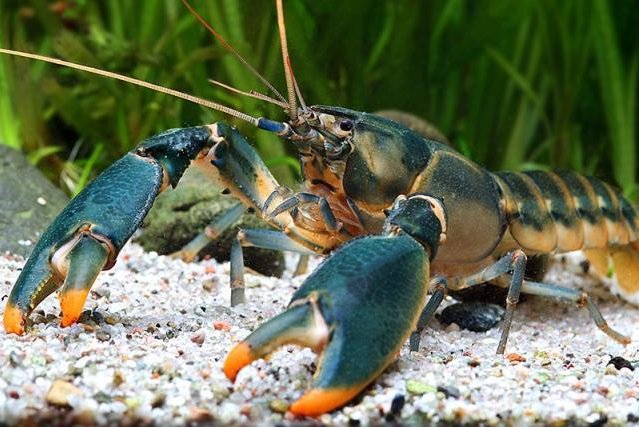A new crayfish species is named for Edward Snowden. Photo by Christian Lukhaup/ZooKeys
SORONG, Indonesia, Aug. 25 (UPI) -- Crayfish experts in Europe have no need for field research. They simply let new species come to them, delivered by the pet trade.
For the second time in recent months, researchers in Europe have announced the discovery of a new freshwater crayfish species after analyzing specimens secured through the global decorative fish market.
Perhaps as a way to draw attention to their findings and infuse science with politics, a team of German scientists, led by independent researcher Christian Lukhaup, have dubbed the new species Cherax snowden in honor of controversial NSA leaker Edward Snowden.
In the new paper describing the green and orange species -- published in the journal ZooKeys -- the authors describe the crayfish's name as an homage to an "American freedom fighter" characterized by his "achievements in defence of justice, and freedom."
Politics aside, the new species is impressive. It's easy to see why aquarium owners would want to accent their collections with such a brightly colored creature.
Researchers say collectors in the pet trade have likely been harvesting the Indonesian crayfish for decades, transporting it across the globe without knowledge of its distinct classification -- likely mistaking it for a close relative.
Earlier this year, Lakhaup and his team detailed another previously unknown crayfish species being traded on the pet market, the pink and blue Cherax pulcher.
"I think it's one of the most beautiful crayfish," Lukhaup told The Washington Post of that discovery. "It's very striking."
Both species hail from remote creeks in Indonesia's West Papua region. And both species' populations are shrinking.
"Clearly, the continued collection of these crayfish for the trade is not a sustainable practice, and if the popularity of the species continues, a conservation management plan will have to be developed, potentially including a captive breeding program," author wrote in the new paper.















